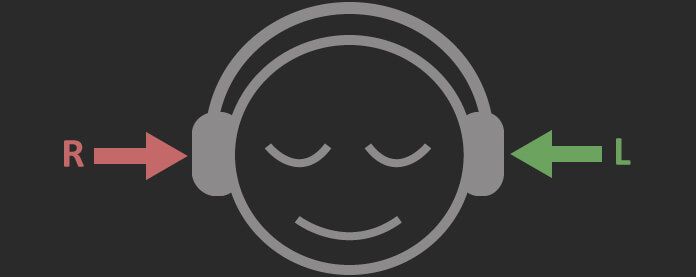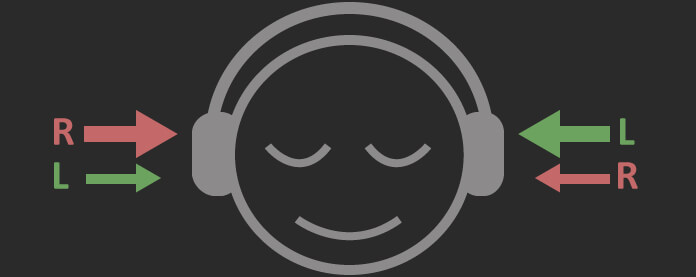- Get link
- X
- Other Apps

The Chinese company Lear started its way as one of the many manufacturers of custom in-channel monitors, but quickly showed that they are ready for any innovations and are not afraid to go to experiments. The complicated device of their flagship, the hybrid model Lear BD4.2 demonstrated this very clearly, but the company decided that they did not have enough experiments with the sound in the framework of existing developments, and started a completely new project, an ambitiously named "Natural Sound System", or .
To begin with, it is necessary to make a small digression into the field of psychoacoustics, this is a scientific discipline that studies the features of human perception of sound. From this interesting area of knowledge we are interested in one question - how a person distinguishes the direction of the source of sound (this ability is called a binaural effect). At the moment, three mechanisms are open, with the help of which a person is able to do this.

- The difference in the amplitude of the signal (volume of sound). This method works mainly for frequencies above 1 KHz, since for them the wavelength is smaller than the size of the human head. Then the ear that hears the sound louder - is closer to him, and by the difference in volume, we determine the direction.
- The difference in the phase of the signal. Neurons perceiving sound are able to determine the phase of the sound signal caused by the difference in the time it takes for each ear to reach 10-15 °, which corresponds to an accuracy of about 10 μs. This mechanism works best also at frequencies around 1-4 KHz
- The difference in the signal spectrum. The sound is reflected from the auricle, head and even shoulders, this brings distortion into the spectrum of signals, which our brain also uses as a source of information about the direction of the signal (especially in the vertical plane). This mechanism is rather inaccurate, because unlike many animals, a person does not have mobile auricles, and for a more precise determination of the direction we are forced to rotate the head.

As is clear from the above, this mechanism in humans is very imperfect. Firstly, we very badly determine the direction to the source of low-frequency sounds. Secondly, our brain is often mistaken, for example, in an anechoic chamber or in water, standard mechanisms do not work. Thirdly, this mechanism does not work for sound in headphones.

All the methods for determining the direction described above are based on the fact that we hear the sound with two ears at once. Usual stereo recordings are created most often for listening in the speakers, and in this case you still hear the signal with both ears: the left ear hears both the right column and vice versa. When listening in headphones, each ear hears only its own signal, so the headphone recordings often do not sound as voluminous and natural as in the speakers.

There are several ways to solve this problem, for example, special algorithms of the crossfade, "mixing" in each channel the sound from the neighboring, often with a phase delay. There are both software implementations and hardware, but they usually do not give a natural result (I somehow wrote about one of the best software implementations of this algorithm).
Another way to solve this problem is the binaural records that appeared recently especially for headphones. To create such records use a model of the human head, with microphones installed in the ears. This gives a record close to what we hear, and when listening to such recordings on headphones we hear a very realistic volume. One of the most vivid albums of its kind, released recently, is . The problem is that there are not so many such records, and you want to listen to familiar music with volume too.

Therefore, Lear decided to implement their own solution to this problem, so the technology was born Natural Sound System or NSS. In this case, the task of "mixing" the signal is taken over by the headphones. In the first prototype of the headphones from Lear, two emitters are used in each ear, one plays out the main signal, and the second is quieter and with a certain delay the signal of the opposite channel plays. I now exaggerate the technology a little, it is more complicated, and Lear does not disclose details of the implementation. To demonstrate how this works, Lear made a demo binaural recording (include subtitles for viewing the translation). Recording allows you to hear your own ears, at least far and not at full strength, what technology is capable of. It is clearly audible how the recording with NSS gives the effect of sound, which is "forward" beyond the head.

To collect money for the development of the first prototype of headphones with NSS support in Lear decided to use croweding. The company set a goal to collect at least 500,000 Hong Kong dollars (slightly less than 65,000 US dollars) and offer everyone to support their project, pre-ordering the world's first headphones with this technology. The headphones are very inexpensive, their price with shipping around the world is less than $ 160, but they look very good, and given the availability of NSS, they are more than interesting. The headphones will be equipped with a replaceable cable and will have a headset function. NSS can be turned on and off by simply pressing a button on their remote control.
You can support the project .

Depending on whether the prototype of headphones with NSS is a success, the company will decide on the release of other models with this technology and its licensing.
Until the end of the company there are still more than 20 days, and this is perhaps the first project, for the success of which I will look with impatience.
The article is based on materials .
- Get link
- X
- Other Apps
Comments
Post a Comment